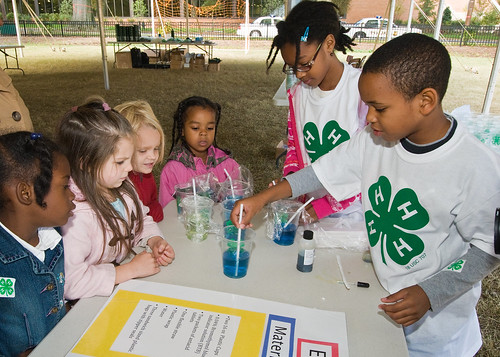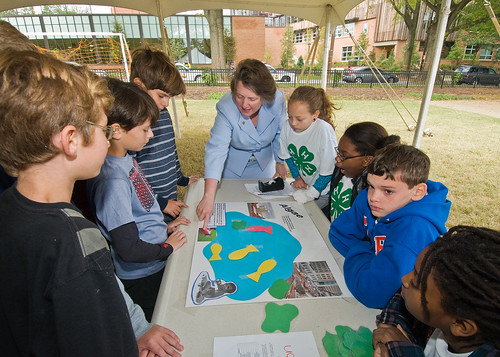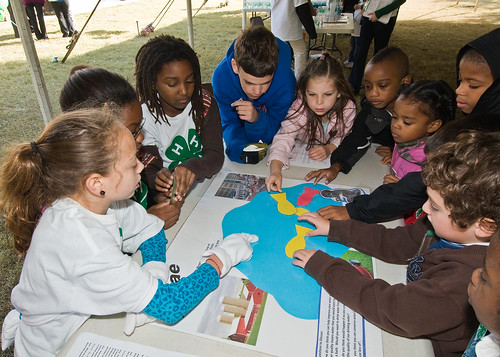
I went back to school yesterday. And my teachers were fourth graders.
Fourth grade students at Hearst Elementary School in Washington, DC taught me and 200 other students about climate change, water quality and carbon footprints through the 4-H National Science Experiment. All across the country and world, hundreds of thousands of students were doing the same set of experiments today as part of 4-H National Youth Science Day. We saw how carbon dioxide builds up in the atmosphere and what its effects can be. Watching students make connections between their actions and the environment was really exciting for me, and with a sixth grader of my own, it was fun to experience science with these students and get a glimpse of how empowering science can be for these youngsters.
4-H has deep roots in all the different components of our education system. It also has a special relationship to USDA; it’s an outgrowth of our land-grant university system and cooperative extension service, and we’ve had a USDA office for 4-H since its inception a hundred years ago. Science, too, has a special relationship to USDA – it’s the basis for practically everything we do at the Department. From providing nutritious food for children to using our natural resources wisely, science informs our efforts to improve the lives of the American people. 4-H National Youth Science Day brings both of these valuable assets – science and kids -- together, and helps us educate a new generation about the science that goes on behind the scenes here at USDA.
This new generation of students will be critical to USDA and to agriculture more broadly. Between 2010 and 2015 we think there will be at least 54,000 U.S. job openings in food, renewable energy and the environment. Organizations like 4-H play an important role in getting students interested in science and on track for careers in agriculture, science and engineering.
As the kids and I worked through the experiments, what I noticed most were their excellent questions and thoughtful comments –the true hallmarks of emerging scientific minds. To a scientist like myself, it gives me double satisfaction to see elementary students so engaged and curious about science. I’m looking forward to seeing those children grow up to be the biologists, pathologists and nutritionists – the scientists and engineers – the USDA and the world will depend on for future innovation.


